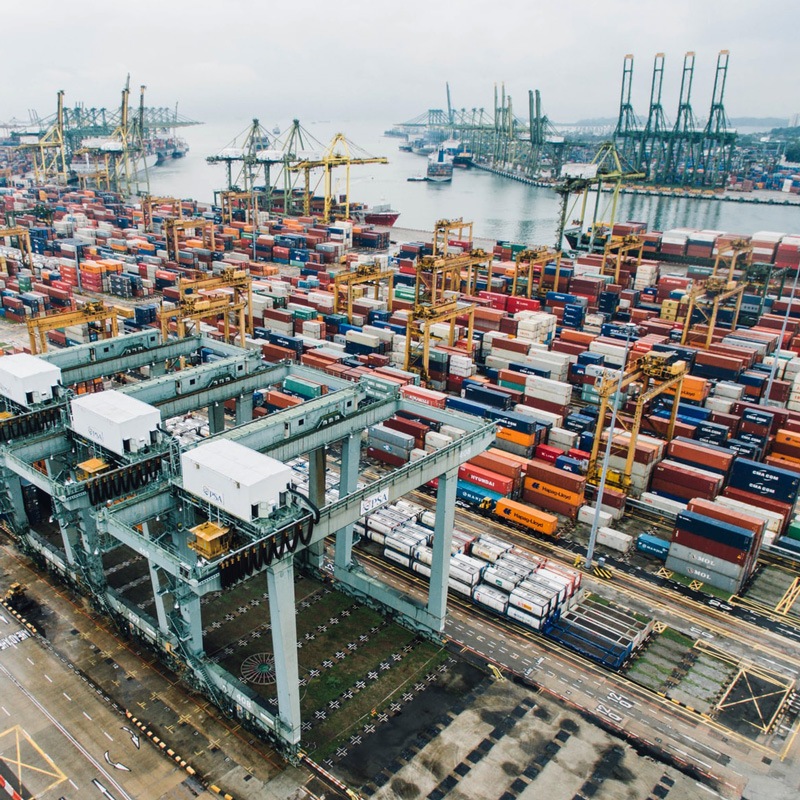
The UK economy in 2022: bouncing back amid many risks
Global Head of Macroeconomic and Sector Research
The UK business outlook for 2022 is reasonably robust, due to strong consumer spending and business investment — despite the short-term setback caused by the Omnicron variant.
That’s the forecast from Ana Boata, Global Head of Macroeconomic and Sector Research of Allianz Trade Group, the trade credit insurance unit of Allianz. She says the UK economy continues to bounce back from the crisis, but with momentum decreasing and insolvencies rising. However, Ms Boata has a long list of potential setbacks that would make the picture less bright, including longer-than-expected supply chain disruption and inflation remaining high even beyond spring 2022.
Consumer spending is critical, as it makes up about 60% of UK economic activity. It should rise by 6.3% in 2022, according to Ms Boata’s forecast, helping UK GDP grow by 4.4%.
UK economy losing momentum in 2022
However, this upbeat picture needs to be viewed in context: the UK's bounceback from the Covid crisis of 2020 has been uneven and is losing momentum. As a result, economic growth in 2022 will be much lower than the 2021 rate of 7.1%.
Economic momentum was already draining away by the last quarter of 2021, and Ms Boata and other economists were reducing their estimates for 2022 growth even before the Omicron variant hit and the government triggered "Plan B" restrictions. These willhit sectors such as hospitality particularly hard in early 2022 .
Add to this, Ms Boata notes that we are still waiting to see the full global picture of disruption caused by the more-infectious Omicron. China's zero-Covid policy means a handful of cases can trigger logistical chaos. In August, it partially closed the world's third-largest container port because a single worker tested positive. As the more infectious Omicron strain washes up on China's borders, Ms Boata says additional potential disruption is a clear risk.
More broadly, she sees supply chain disruptions continuing at least until the second half of the year, when they will be eased by global factors such as the availability of additional transport capacity and reduced demand for durable goods. Also, companies have rebuilt stocks in 2021; this should make global supply chains more resilient against disruption in the first half of 2022.
Insolvencies and the domino effect
The other significant risk is homemade. Compared to other European countries, the UK is quick to taper government business support and some firms may struggle to repay loans . In contrast, the $1.2bn of infrastructure spending approved in the US in November will support demand for five years or more.
"The withdrawal of this UK support is already visible in business insolvency numbers," Ms Boata says. Recorded insolvencies in England and Wales in November 2021 were for the first time higher than pre-pandemic levels. This is despite ongoing restrictions in winding-up orders which expire in April 2022, putting firms at risk from the insolvency domino effect.
Overall, she expects to see around 20,540 insolvencies for the year – slightly below 2019 levels, but much higher than when government support was in full swing. “The risks are materialising now,” she says. “But the pace at which they materialise is still uncertain.”
Lurking in the background is the risk of new variants. This is heightened if emerging markets remain under-vaccinated in 2022, creating a fertile ground for further mutation.
And the UK economy is still wrestling with the impact of Brexit, which has disrupted the labour market and exacerbated supply chain problems. Based on EU trade data, Ms Boata estimates that Brexit drives about one-quarter of current supply chain disruptions.
Reducing these risks requires investment, and this along with consumer spending will be positive forces for the UK economy in 2022.
Business investment is expected to increase by 5%, as companies push the button on some long-delayed plans, including investing to reduce reliance on external suppliers. However, like the consumer spending boom, the effect is tapering. Ms Boata predicts 2023 growth at just 2.8%, which is almost back to pre-pandemic levels.
Sterling exchange rate forecast for 2022
The other key figures that businesses need to watch for are exchange rates. With the Bank of England cautiously raising interest rates two or maybe three times in 2022, the pound should remain relatively strong by recent standards, though still much weaker than before the Brexit Referendum, averaging around €1.17.
This will help those firms selling to domestic markets, by keeping down the price of imported raw materials, but hit exporters who face competitiveness hurdles.
“The strong pound is in a way eating a bit of the competitiveness of UK exports, “Ms Boata notes. However, it is also helping control inflation by keeping down the cost of imported goods.
For UK exports generally, 2021 was a weak year. Global trade surged, but the UK didn't enjoy the benefits — indeed, exports fell by 1.8%. Ms Boata expects some catch-up in 2022, with UK exports expected to rise by 4.0%. However, compared to other countries, UK exports are more reliant on imported components or raw materials, making them vulnerable to supply chain disruption.

Globally, the picture is unusual. Due to catch-up effects, developed countries will drive more than half of global growth for the first time since the 2008 financial crisis.
The forecast of UK GDP growth of 4.4%, compares with 4.1% for the Eurozone and 3.9% for the US. “The UK still has more catch-up effects than the rest of Europe as the output gap [the gap between actual GDP and its potential] remains above 3%, which is why we forecast growth above the European average,” she says.